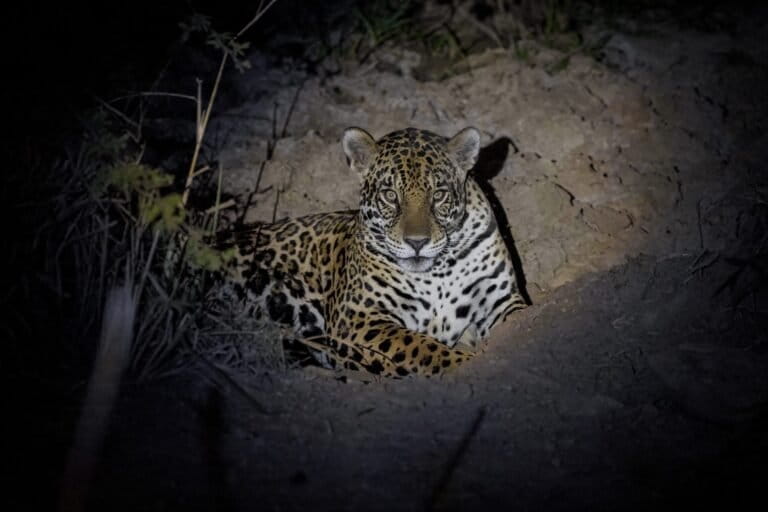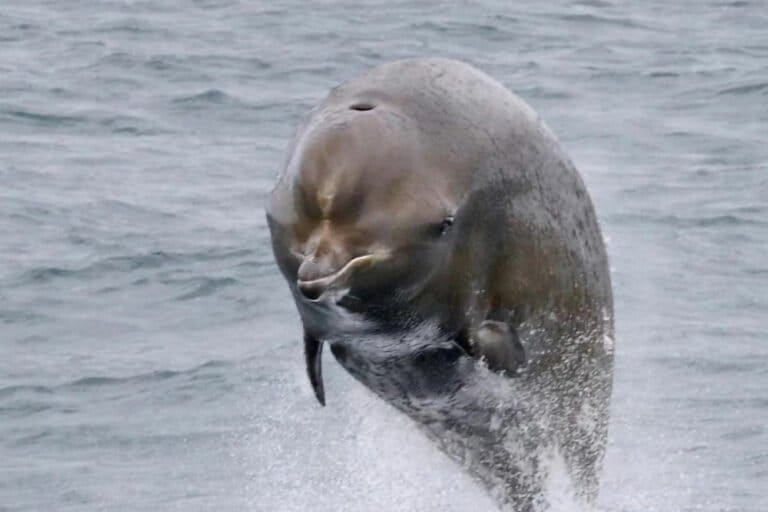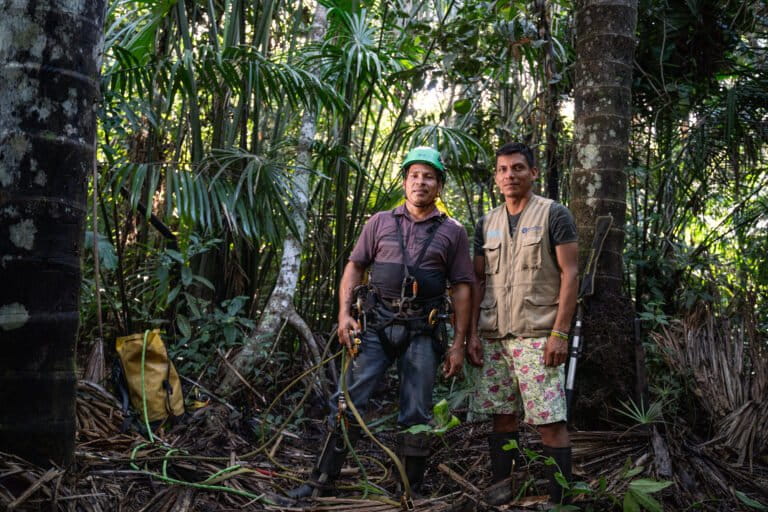- The Summit on Overcoming the Invasive Species Challenge brought together leading scientists, innovators and entrepreneurs to examine new solutions to the severe consequences of invasive species.
- It highlighted emerging opportunities to prevent, contain and exterminate invasive species—which have costly ecological, economic, infrastructural, health and cultural ramifications—and identified the scientific and technical obstacles to these goals.
- Organizers hope to arrange a longer meeting next year with more networking and workshopping opportunities as well as overcome obstacles to testing and implementing technologies.
“We can do this,” declared the big round pins on the chests of attendees at the first annual Innovation Summit on Overcoming the Invasive Species Challenge. Cohosted by the National Invasive Species Council (NISC), the conference brought together leading scientists, innovators and entrepreneurs to examine new solutions to the severe consequences of invasive species on Monday, December 5th, at the National Museum of the American Indian in Washington, DC.
“It met and, in some ways, exceeded our expectations,” said Jamie Reaser, Executive Director of the National Invasive Species Council. “Of particular note is the positive atmosphere that was a hallmark of the event. The speakers and the audience shared a ‘we can do this!’ perspective that has the potential to transform a field historically characterized by frustration and, sometimes, surrender.”

Invasive species are foreign organisms with ecological, economic, infrastructural, health and cultural ramifications for the areas they overrun, costing the U.S. around $200 billion per year in ecological damage and control alone, according to economist David Pimentel. Often lacking predators or competition in their new environments, they are notoriously difficult to manage or remove. The meeting followed the signing of an executive order on “Safeguarding the Nation from the Impacts of Invasive Species” and raised attention to this pressing environmental issue. It highlighted emerging opportunities to prevent, contain and exterminate invasive species and identified the scientific and technical obstacles to these goals.
“Invasive species are among the most significant drivers of species endangerment and extinction; in island and freshwater ecosystems, they may now be the most substantial threats to biodiversity,” said Reaser. “The Summit is intended to introduce technology innovations that have the potential to be ‘game changers,’ to enable us to overcome some of the most devastating invasive species challenges, to change the story from ‘we can’t’ to ‘we can.’”
The ill effects of invasive organisms on native plants and animals are of global concern. Around 250 attendees, some from as far away as Australia, filled the museum’s Rasmuson Theater, while another 100 tuned in via webcast. They represented federal, state, tribal and local political agencies, non-governmental organizations, academic institutions and private companies, including tech firms. The Laura and John Arnold Foundation, Smithsonian Institution, Conservation X Labs and Island Conservation collaborated with NISC to organize the event.
The agenda covered the management of several invasive issues, including Indo-Pacific lionfish, large constrictor snakes, ballast water discharge and other particularly complicated cases. Technologies showcased included a passage that automatically extracts invasive fish from streams and multiple genetic tools with the potential to eliminate and curb the spread of invasive organisms. Panel discussions focused on an array of subjects aiming to stimulate technological innovation for preventing, eradicating and controlling invasive species—incentivizing technology advancement, creating regulatory frameworks supporting emergent technologies and drawing innovators to invasive species problems.

“The Summit is designed to attract technology innovators to invasive species challenges in the hope that new innovations will be inspired, or existing innovations created for different purposes will be applied to solve invasive species issues,” said Reaser.
“It was inspired by my desire to change the mythology of the invasive species issue from, ‘it’s too challenging, too complex, too expensive…why bother?’ to, ‘We can make this happen…now!’” she continued. “Technology innovation is one way of opening a field to new possibilities and for inspiring investment in those possibilities.”
Whooshh Innovations, a tech company from Seattle, presented their example of such technological innovation in the third session of the summit. They’re addressing the invasive species problem by using a soft, flexible air-filled tube that works through gentle pressure variances to cost-effectively photograph, sort and move invasive fish swimming upstream to spawn.
“This is a multifaceted system that solves two problems,” said Bryan, distinguishing the technology from traditional barriers that block invasive but also non-target species. “Now you have the ability to not only pass the targeted fish that you want to go past the barrier, but to remove the invasive species. We’re helping the species themselves, our food supply and clean energy—key to our ability to make it through climate change and to our very survival.”
The organization successfully tested the technology with common carp and Asian carp in the Midwest last year. In 2017, the passage will undergo further trials with common carp through the University of Minnesota to research the best placement and flow to attract them into the tube; Whooshh will also work with the Great Lakes Commission to confirm the system’s identification of lampreys. Dubbed the Salmon Cannon, the concept derives from a similar one that Whooshh created six years ago to transport fruit and later applied to transport fish over obstructions like dams and through processing plants in the U.S. and Norway.
“They were trying to say, if we come together with a plan and get appropriately funded, we can have the impact we’re looking to have,” said Bryan regarding the conference. “It was very impressive and gave everybody renewed energy.”

Michael Stebbins, Vice President of Science and Technology at the Laura and Arnold Foundation, described the event as “a watershed moment for addressing invasive species writ large.”
Organizers hope to acquire enough funding for a two-to-three-day summit next year. This would provide time for more networking and “innovasive” think tanks in which people tackling “grand challenges” pertaining to invasive species would partner with technological innovators who could help produce creative solutions to those problems. Additionally, the hosts would like to make the event more accessible to international participants and, budget permitting, incorporate grant awards for challenges and prizes for technology innovation.
According to Reaser, technology has historically been applied in field biology to researching and monitoring invasive organisms, but now scientists have become highly interested in technological answers to the prevention, management and restoration questions of the invasive species issue. The massive scale of the problem requires investments in cost-effective and time-efficient technologies.
“The advancements poised to make the greatest leap in our capacity to address the invasive species issue are automated and genetic-based technologies for detection at ports of entry as well as eradication and control of specific species,” said Reaser.

Yet several obstacles face the innovation and application of technology for dealing with the invasive species problem, she pointed out. Funding is the biggest challenge, with limited financial support for research and development. What’s more, poor communication between invasive species managers and the research and development community makes knowing where and when to obtain money hard. The dissonance between the speed of technological progress and the sluggishness of policy to evolve to accommodate innovation and technology integration presents another setback. Social acceptance of developing technologies represents a third hurdle, especially when they serve to eradicate or control charismatic vertebrate mammals. Sometimes, approaches such as trapping, shooting, poisoning, managing reproduction or applying biocontrol agents overcome economic and regulatory hindrances, but societal norms impede the testing and utilization of these techniques.
“The NISC Secretariat and partners are actively working to address these obstacles in the invasive species context,” said Reaser.
Banner image: Invasive lionfish threaten native fish and ecosystems in the coastal waters of the U.S. Atlantic. Photo credit: George Powell.













